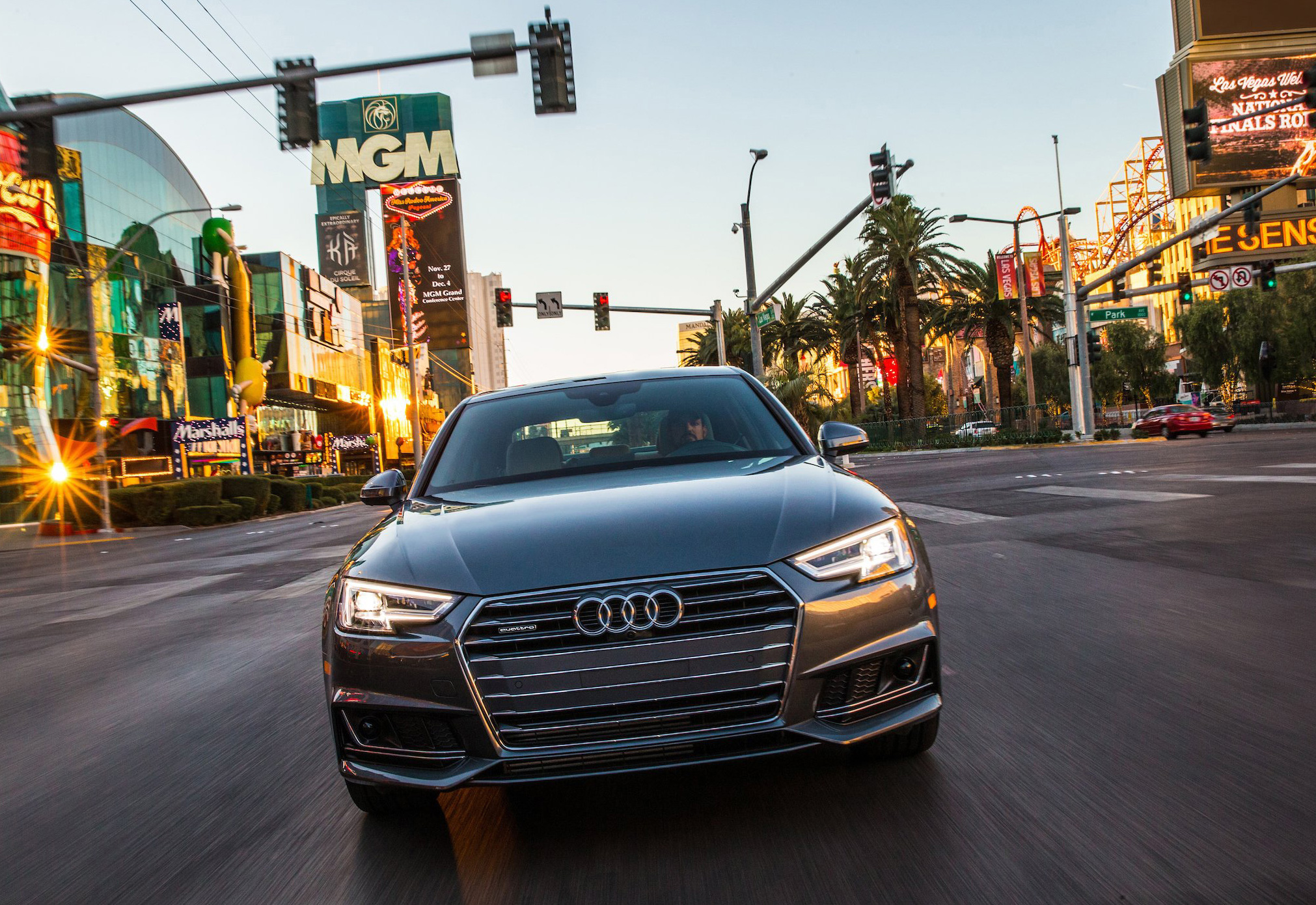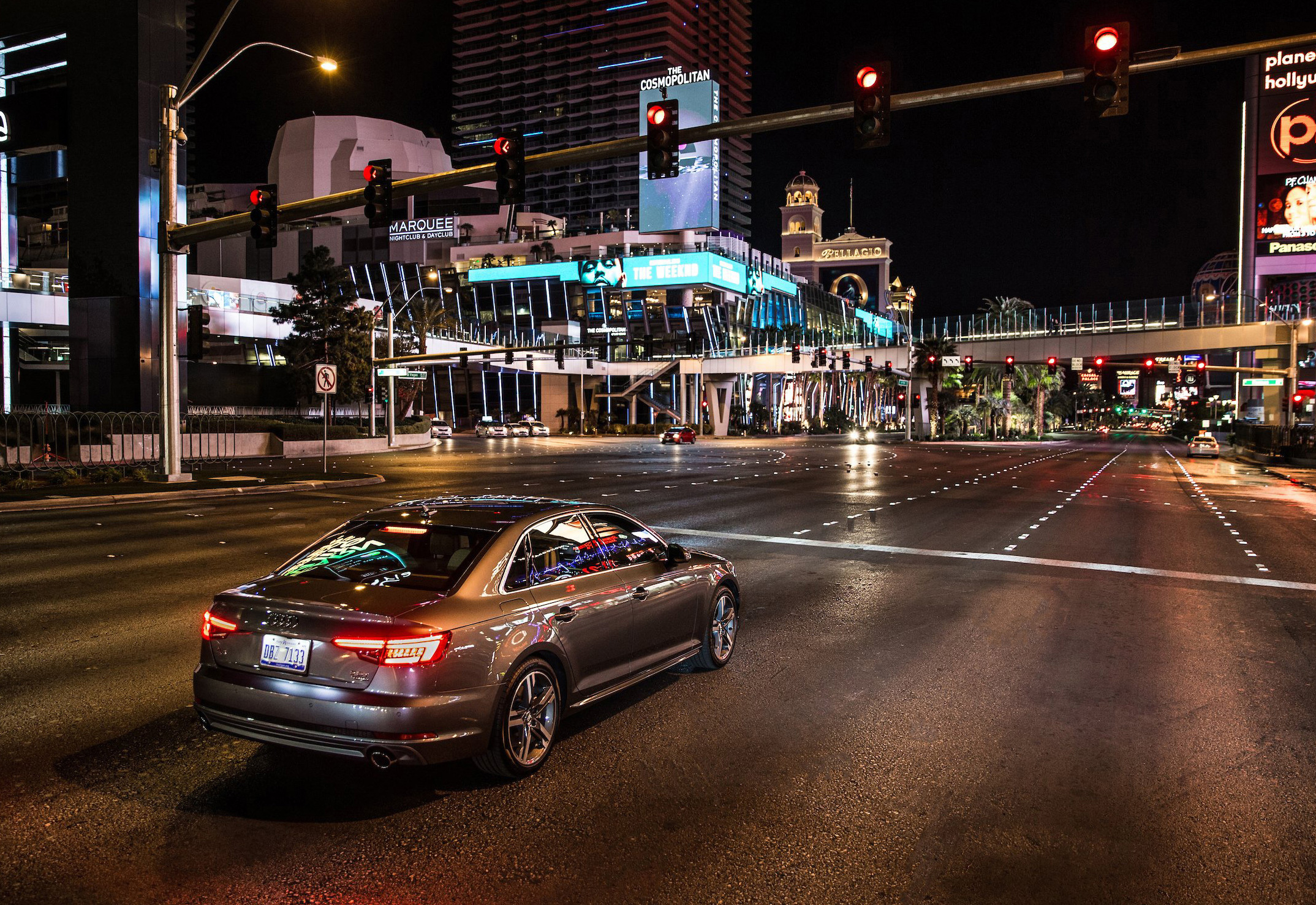


Audi has become the first vehicle manufacturer to connect its car to the traffic-light infrastructure.
In Las Vegas, Audi A4 and Q7 models are now able to display traffic-light phases directly in the car. Further US cities will follow, and the introduction of the system is planned in Europe.
Traffic Light Information optimises traffic flow, saves valuable time and reduces environmental impact. Audi believes that if you know in advance when a traffic light will switch from red to green, your driving is more relaxed and efficient. It is also an important step towards autonomous driving.
All Audi A4 and Q7 models produced for the U.S. market since June 2016, and equipped with Audi connect, have the function on board. In the U.S, municipal traffic management centres will send the traffic-light data to Audi’s project partner Traffic Technology Service (TTS). Here the data is prepared and relayed to the Audi’s on-board computer via a fast Internet connection, for example 4G/LTE.
Audi is co-operating with several cities in Northern America to upgrade the Vehicle-to-Infrastructure (V2I) technology. The first function of the Traffic Light Information V2I component is called Time-to-Green. In the Audi virtual cockpit or head-up display, drivers see whether they will reach the next light on green while travelling within the permitted speed limit. If not, a countdown is provided of the time remaining until the next green phase, allowing drivers to ease of the accelerator in good time.
Pilot projects in Europe have shown that drivers exercise more foresight thanks to this information about traffic lights, with a beneficial overall effect on traffic flow. “In our tests the number of cars that had to brake to a stand still in traffic fell by around 20 percent. This saved time for the driver and also made fuel savings of about 15 percent in the pilot project,” says Michael Zweck, project manager for Audi Traffic Light Information.
“For the first time, our cars are exchanging data with traffic infrastructure in real time. Drivers can adapt their behaviour to the situation and move through city traffic in a much more relaxed and controlled way,” says Andreas Reich, head of Electronics Pre-Development at AUDI AG. “We increase energy efficiency when we connect our Audi models to smart cities. Further V2I services will follow, making the car into an interactive mobile device. We see autonomous driving as the end of this development.”
Audi says the spread of the technology will help city traffic planners to understand the causes of hold-ups and optimise the phasing of traffic lights. In future Traffic Light Information could be linked up to smart navigation and used for new powering concepts, for example “green waves” in traffic-light sequences could be incorporated in route planning.
It is also conceivable, says Audi, that e-tron models could make greater use of braking energy by charging the battery as they decelerate at a red light.
Audi also says it intends to introduce the technology in Europe. In Berlin, Ingolstadt, Garmisch-Partenkirchen and Veronathere have already been extensive pilot projects. In Berlin alone, some 700 traffic lights in the inner city have been connected to the service.
